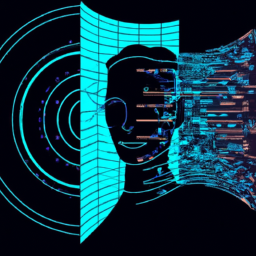The Role of AR and VR in Immersive Marketing: Discuss the role of AR and VR in creating immersive marketing experiences
When it comes to marketing, standing out from the competition is crucial. In today’s digital age, traditional advertising methods might not cut it anymore. That’s where Augmented Reality (AR) and Virtual Reality (VR) come in. These technologies have revolutionized the way marketers interact with audiences, creating immersive experiences that go beyond the limitations of traditional media.
What is AR and VR?
First, let’s differentiate between AR and VR:
Augmented Reality (AR) is a technology that overlays digital information, such as images, videos, or 3D models, onto the real world. Through the use of smartphones, tablets, or specialized AR glasses, users can interact with digital content within their physical environment.
Virtual Reality (VR), on the other hand, completely immerses users into a simulated environment. By wearing a VR headset, users are transported to a virtual world where they can explore and engage with 3D objects and environments.
The Immersive Power of AR and VR
AR and VR provide marketers with the ability to create truly immersive experiences for their audiences. By combining these technologies with creative storytelling and interactive elements, marketers can engage customers in new and exciting ways.
One of the key advantages of AR and VR is their ability to transport users to different locations or situations. For example, a travel agency could use VR to allow potential customers to virtually visit their dream destinations – walking along the beaches of Bali or exploring the ancient ruins of Machu Picchu. By experiencing these locations in a virtual environment, users can get a taste of what they can expect from a real trip, ultimately helping with the decision-making process.
AR, on the other hand, can be used to enhance the user’s current environment. For example, a furniture retailer could create an AR app that allows customers to visualize how a specific sofa would look in their living room. By simply pointing their smartphone camera at the desired spot, users can see a virtual image of the sofa overlayed on their actual surroundings.
Creating Interactive and Memorable Experiences
AR and VR technology also enable marketers to create interactive and memorable experiences that leave a lasting impression on their audience. By engaging multiple senses and encouraging user participation, these technologies make marketing campaigns more impactful.
Imagine attending a trade show and stumbling upon a booth that has a VR experience set up for onlookers. As you put on the VR headset, you are transported to another world that showcases the products or services being promoted. This immersive experience allows you to fully engage with the brand, creating a memorable connection that could influence your purchasing decisions.
AR can also be used to gamify marketing campaigns, sparking user interest and participation. For example, a fast-food chain could develop an AR scavenger hunt where customers must find and collect virtual items in their restaurant to unlock discounts or special offers. This playful and interactive approach not only attracts attention but also encourages users to spend more time engaging with the brand.
Benefits for Marketers
The role of AR and VR in immersive marketing goes beyond simply capturing attention; it provides marketers with valuable insight and data. By analyzing user behavior, such as where they look or interact the most, marketers can gain valuable insights into consumer preferences and optimize future campaigns accordingly.
Additionally, AR and VR experiences are highly shareable. Users are more likely to share their experiences on social media platforms, spreading brand awareness and reaching a broader audience. This organic user-generated content can be a powerful tool for marketers.
Overall, AR and VR offer marketers the opportunity to create unique, engaging, and memorable experiences for their audience. By going beyond traditional advertising methods and embracing these immersive technologies, brands can leave a lasting impression and stand out from the competition.


